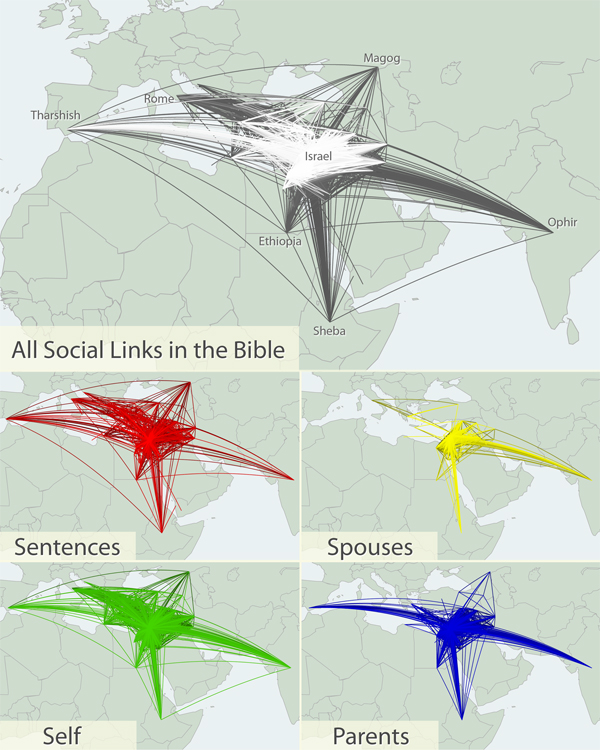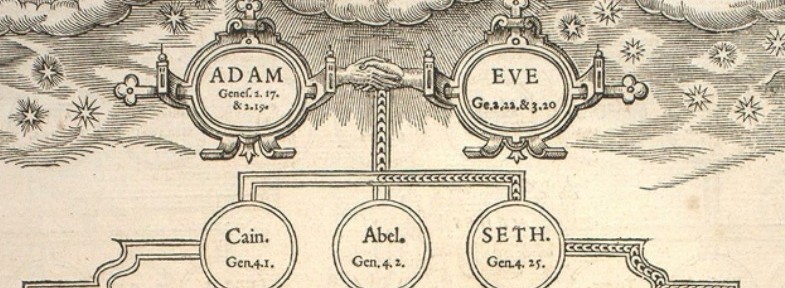Early this year I discovered a fascinating visualization that mapped all the connections made between “friends” on Facebook. It quickly spread around the internet with many people pointing out how country boundaries appeared from the links themselves with no borders drawn in the background.
So, as is my tendency, I thought about what it might look like to do something similar based on the connections between people and places in the Bible. Once I set out to define these relationships, I quickly found it hard to get the data I would need. Unlike with Facebook, Moses and Aaron had no way to input their personal information in a database that makes it easy to do this kind of thing. The Semantic Bible project has come a long way in terms of explicitly defining relationships among New Testament figures, but nothing yet for the Old Testament which contains far more people and places. Chris Harrison managed a complex visualization of social networks, but it is based strictly on word proximity to generate connections.
Since MetaV contains genealogical information for everyone in the Bible and geolocation data, I was able to create a composite database of links using both definite relationships and textual proximity. Then, I mapped the data following a very handy tutorial by Nathan Yau at FlowingData. People are linked to places if that person’s name appears in the same sentence as a place name. “Sentence” connections are those which have two people mentioned by name in the same sentence. “Self” links are where one person is linked to multiple places due to travels, marriage, etc. “Spouse” and “Parent” relationships are defined according to available genealogy data.
Color variations are a function of how many times the connection appears and the distance between the places. Lines are drawn along great circle routes in keeping with the Facebook map inspiration.

What is immediately clear (though not at all surprising) is the centrality of Israel. The links within Israel and the ones going around the world are so dense that one can’t help but notice is is at the heart of all the interconnection in scripture, no matter how you slice the data. I would love to hear your thoughts on these patterns, so please leave a comment if you find something interesting!


